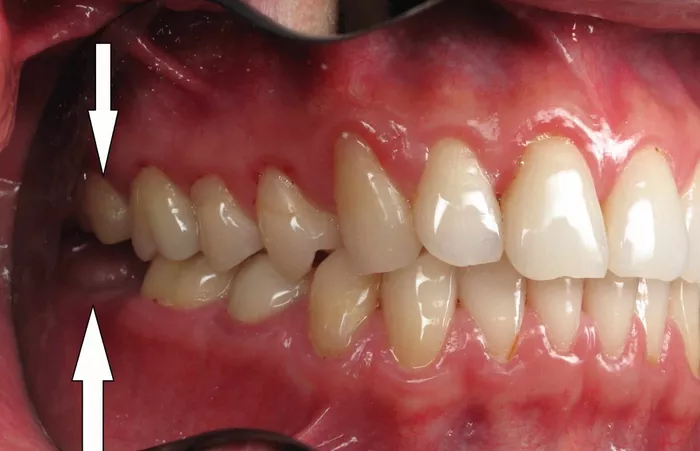Back teeth refer to the teeth located at the rear of the mouth, playing crucial roles in chewing and maintaining overall oral health. Unlike front teeth, which are primarily for biting and cutting food, back teeth have a different structure and function designed for grinding and crushing food.
What are Back Teeth?
Back teeth generally include premolars and molars. These teeth have a larger surface area with multiple cusps (points) that help break down food into smaller, digestible pieces. Their structure supports the heavy forces involved in chewing.
Types of Back Teeth
Premolars (Bicuspids)
Premolars are located just behind the canine teeth and in front of the molars. Adults usually have eight premolars, two on each side of both the upper and lower jaws. Premolars have two or more cusps and serve as a transition between the sharp canines and the flatter molars.
Molars
Molars are the largest teeth in the mouth, situated behind the premolars. Adults normally have 12 molars, including four third molars, commonly known as wisdom teeth. Molars have broad, flat surfaces with multiple cusps designed for grinding food thoroughly before swallowing.
Why Are Back Teeth Important?
The primary function of back teeth is mastication — the process of chewing food. By breaking food into smaller particles, back teeth enable easier digestion and better nutrient absorption. They also help maintain the vertical height of the face and stabilize the bite by supporting the jaws.
Development and Eruption of Back Teeth
Back teeth erupt later than front teeth during childhood. Typically, first molars appear around age six, second molars around age 12, and wisdom teeth between ages 17 and 25. The timing of eruption is important for dentists to monitor to avoid crowding or alignment issues.
Common Problems Associated with Back Teeth
Tooth Decay (Cavities)
Back teeth are more prone to cavities than front teeth due to their complex shape with grooves and pits, which can trap food particles and bacteria. If not cleaned properly, this leads to plaque buildup, acid production, and enamel erosion.
Gum Disease (Periodontal Disease)
Back teeth are harder to clean thoroughly, making them vulnerable to gum inflammation and infections. Gum disease can cause recession, bone loss, and eventual tooth loss if left untreated.
Impacted Wisdom Teeth
Wisdom teeth often do not have enough space to erupt properly, leading to impaction. This can cause pain, swelling, infection, and damage to adjacent teeth, sometimes requiring surgical removal.
Cracks and Fractures
Due to the high chewing forces, back teeth are susceptible to cracks or fractures. Habits like teeth grinding or biting hard objects increase this risk.
Maintaining the Health of Back Teeth
Oral Hygiene Tips
Proper brushing and flossing are essential for keeping back teeth healthy. Using a toothbrush with a small head and soft bristles helps reach molars and premolars. Flossing removes plaque between teeth where brushes can’t reach.
Regular Dental Check-ups
Routine dental visits allow for early detection of cavities, gum issues, or alignment problems in back teeth. Professional cleanings remove tartar buildup and help maintain healthy gums.
Dietary Considerations
Limiting sugary and acidic foods helps prevent decay. Eating fibrous foods like fruits and vegetables can also aid in natural cleaning by stimulating saliva production.
Use of Dental Sealants
Dental sealants are protective coatings applied to the chewing surfaces of molars and premolars. They fill grooves and pits to prevent food and bacteria accumulation, reducing cavity risk.
Restorative Treatments for Back Teeth
Fillings
When decay is detected, fillings restore the tooth’s shape and function. Materials include composite resins, amalgam, or ceramic, chosen based on location and aesthetics.
Root Canal Therapy
If decay or trauma reaches the tooth pulp, root canal therapy cleans and seals the inside of the tooth to save it from extraction.
Crowns
When back teeth are extensively damaged, crowns (caps) cover and protect the tooth structure, restoring strength and chewing function.
Extraction and Replacement
In cases where back teeth cannot be saved, extraction may be necessary. Replacements include dental implants, bridges, or partial dentures to maintain chewing ability and prevent shifting of adjacent teeth.
Special Considerations for Back Teeth
Bruxism (Teeth Grinding)
Many people unconsciously grind their back teeth, especially at night, leading to wear, sensitivity, and fractures. Night guards are often recommended to protect back teeth from damage.
Orthodontic Impact
Back teeth play a critical role in orthodontics. Proper alignment of molars and premolars ensures a balanced bite and prevents abnormal wear and jaw problems.
Back Teeth Sensitivity
Sensitivity in back teeth may arise from exposed dentin, decay, or gum recession. Addressing these issues promptly prevents progression to more serious dental problems.
Summary
Back teeth, including premolars and molars, are essential for chewing and overall oral health. Their unique structure supports grinding food and maintaining facial shape. Proper care through oral hygiene, diet, regular dental visits, and timely treatments is crucial to keeping these teeth healthy and functional throughout life.
Related topics

